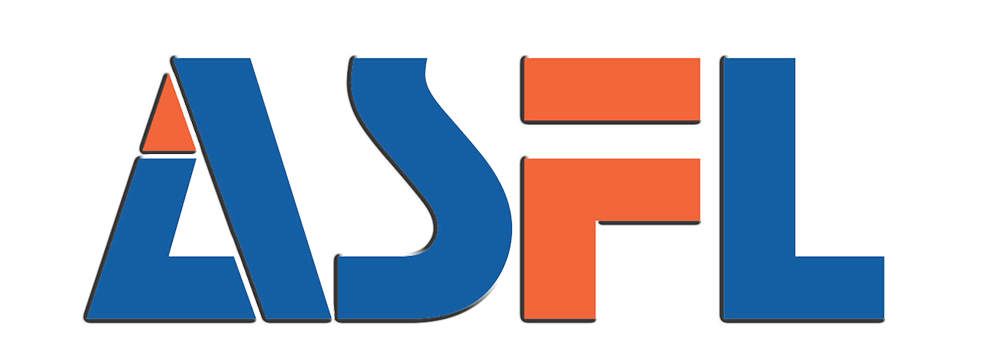Types of Drink Filling Machines for Non-Carbonated and Carbonated Beverages
Gravity Filling for Non-Carbonated Beverages Like Water and Juice
Gravity fillers work by letting liquid flow naturally based on its own weight, which helps get just the right amount in each container. That's why they're so popular for things like bottled water and fruit juices that don't need carbonation. The system keeps pouring until it hits the target volume set by the operator. What makes these systems stand out is their open nozzle setup that cuts down on air getting mixed in, something that really matters for products sensitive to oxygen exposure, especially those fancy cold pressed juice blends people are drinking now. A look at industry stats from Beverage Packaging Report 2023 shows most juice makers stick with gravity filling methods because they're straightforward to operate and don't require much upkeep compared to other options.
Counter Pressure Filling for Carbonated Drinks to Preserve Carbonation
Counter pressure fillers work by putting carbonated drinks such as soda into bottles that already have some pressure inside, which helps keep all that precious CO2 from escaping. When the pressure inside the bottle matches what's in the beverage itself, most manufacturers report keeping around 95-98% of the carbonation intact while filling. According to recent findings published in Beverage Engineering back in 2024, these kinds of filling systems cut down on unwanted foam formation by about three quarters when compared with older gravity based techniques. That makes a big difference for companies producing things like sparkling water or craft beers where maintaining proper fizz levels is absolutely critical to customer satisfaction.
Iso-Barometric Fillers for Carbonated Soft Drinks in PET or Glass Containers
Iso-barometric filling systems work by using vacuum pressure along with gas purging techniques to get carbonated beverages into those PET bottles and glass containers pretty quickly too around 50 thousand units per hour in some cases. What makes these machines stand out is how they keep pressure stable during the entire filling process, which stops that annoying fizz collapse problem we see in highly carbonated sodas and energy drinks. The beverage industry has been seeing some impressive results lately. A recent study showed manufacturers cutting down on wasted product by about thirty percent compared to older filling technologies, according to findings published last year in Carbonated Beverage Production Review.
Dual-Purpose Drink Filling Machine for Carbonated and Non-Carbonated Beverages
Facilities equipped with hybrid systems featuring adjustable pressure settings can actually switch between different beverages within about 15 minutes or so. Take a look at dual purpose drink fillers for instance they start off handling plain bottled water first thing in the morning but then make the jump to something fizzy like lemon lime soda come afternoon time. According to research from the Flexible Manufacturing Study released back in 2022, this kind of equipment boosts production line efficiency by roughly 40 percent when manufacturers need to work across multiple beverage lines. The flexibility makes sense both operationally and financially for companies producing a range of drinks.
Understanding the Core Differences and Applications Across Filling Technologies
| Factor | Gravity Filling | Counter Pressure | Iso-Barometric |
|---|---|---|---|
| Speed | 200-500 BPH | 300-800 BPH | 1,000-50k BPH |
| Carbonation Retention | N/A | 95-99% | 98-99.5% |
| Container Types | Plastic/Glass | Glass/Aluminum | PET/Glass |
Non-carbonated producers prioritize gravity systems for cost efficiency ($0.003/fill vs $0.012/fill for counter pressure), while carbonated brands invest in pressure-controlled technologies to maintain product integrity.
Hot Fill vs. Cold Fill Technology: Preserving Quality in Juice, Tea, and Soft Drinks
Beverage manufacturers must choose between hot fill and cold fill technologies based on product sensitivity, shelf-life requirements, and nutritional preservation goals. Both methods address microbial safety while balancing flavor integrity and production efficiency.
How Hot Fill Technology Extends Shelf Life for Juices and Tea Beverages
The hot fill system works by heating drinks up around 85 to 90 degrees Celsius just before they go into containers. This heats things up enough to kill off bad bacteria while also sterilizing the inside of whatever container is being used. When these heated liquids cool down after filling, they form what's basically a vacuum seal inside the bottle. That helps keep products fresh for quite a long time actually about anywhere from six months all the way up to twelve months without needing any chemical preservatives added in at all. Pretty good for stuff like citrus based juices or herbal tea blends that tend to spoil faster normally. Most companies today use plastic bottles made from PET material that can handle the heat treatment just fine. Still there are cases where traditional glass bottles might still make more sense especially when dealing with really extreme temperatures during processing.
Cold Fill Advantages for Preserving Flavor and Nutrients in Sensitive Beverages
The cold filling process keeps products at temperatures under 25 degrees Celsius by relying on sterile filtration rather than heating them up. What does this mean for nutrition? Studies show that around 98 percent of those sensitive nutrients stay intact in things like almond milk and fresh squeezed orange juice when processed this way, unlike traditional hot filling techniques. Sure, it needs a pretty clean environment meeting ISO 7 standards, but there are definite advantages. Cold fill operations actually cut down on energy consumption by about forty percent overall. Plus, flavors don't get messed with as much in delicate drinks such as cold brew tea where taste preservation really matters to discerning customers.
Aseptic Filling Systems for Still Beverages: Integration With Cold and Hot Fill Processes
Advanced facilities combine aseptic technologies with both filling methods through:
| Technology | Temperature Range | Compatible Products | Shelf Life Extension |
|---|---|---|---|
| Hybrid Hot Fill | 70–90°C | High-acid juices, tea concentrates | 9–18 months |
| Aseptic Cold Fill | 4–25°C | Dairy alternatives, vitamin waters | 6–9 months |
These integrated systems allow manufacturers to switch between filling methods while maintaining a single sterilization protocol for packaging materials.
Evaluating Thermal Degradation Risks in Heat-Sensitive Juices
According to recent research published in the Juice Quality Report for 2023, orange juice loses quite a bit of its vitamin C when it's hot filled compared to cold filled versions. The numbers are pretty telling actually: around 78% retention versus nearly 94%. That's a big difference for something we all know is important for our health. To combat this issue, many juice makers have started implementing some pretty clever techniques. They're using these rapid cooling tunnels along with nitrogen flushing methods to cut down on nutrient losses during the hot filling process. What they've managed to do is reduce the time products spend under heat from about 120 seconds down to just 45 seconds, which makes a world of difference for those delicate ingredients. And there's another trick up their sleeve too real time Brix monitoring systems that help keep things from getting over processed by constantly checking temperature levels against what's happening with the dissolved solids content in the juice itself.
Container Compatibility: Optimizing Drink Filling Machines for PET, Glass, and Aluminum
Adapting Filling Systems for Different Container Types: PET, Glass, and Aluminum
According to recent data from the Beverage Packaging Report in 2023, today's drink filling equipment works well with about 98.4% of standard packaging types. When it comes to those flexible PET containers, manufacturers have developed special modular grippers paired with gentle pressure nozzles so they don't crush these lighter weight plastic bottles. Glass bottles present another challenge entirely. The machines need extremely precise height control adjustments, around 0.05 millimeters accuracy actually, which helps keep those delicate glass surfaces chip free throughout both filling and capping operations. And then there are aluminum cans where speed becomes critical. These require fast acting sealing systems capable of completing those tight seams within just over a second to stop air getting in and causing oxidation problems. A bunch of recent research papers on aluminum can filling tech back up these operational requirements.
Precision Engineering for Consistent Fill Levels Across Diverse Packaging
Modern flow meters keep their volume accuracy within about half a percent even when dealing with different container shapes something that really matters when production switches between those standard 330ml cans and larger 2L PET bottles. The viscosity compensated valves are pretty smart too they can tweak the flow speed all on their own going from around 200 milliliters per second for plain water down to just 50 ml/s when handling thicker pulpy juice products. And let's not forget about those overfill prevention sensors which cut down wasted product by roughly 18% every year compared with what happens in manual operations. A recent industry report from early 2024 showed these automated systems making a real difference in reducing waste across packaging lines.
Case Study: High-Speed Production Line for Mixed-Container Beverage Brands
A leading European manufacturer achieved 87% OEE (Overall Equipment Effectiveness) using a flexible drink filling machine handling three container types simultaneously. Key achievements include:
- 4-minute changeovers between PET, glass, and aluminum formats
- 95% fill accuracy maintained at 24,000 containers/hour
- 0.3% material waste through adaptive packaging interfaces
The system's dual-lane design allows parallel processing of carbonated and non-carbonated beverages without cross-contamination.
Automation, Efficiency, and Smart Features in Modern Drink Filling Machines
Key Features of Automated Drink Filling Machines: Hygiene, Speed, and Reliability
Modern drink filling machines feature stainless steel construction and CIP (Clean-In-Place) systems to meet stringent hygiene standards, critical for beverages like juice and soft drinks. Servo-driven fillers achieve speeds exceeding 30,000 containers per hour while maintaining ±0.5% volume accuracy, minimizing product waste and maximizing throughput.
Reducing Labor Costs and Human Error Through Automation
Automated systems reduce manual intervention by 70%, as demonstrated in a 2023 industry analysis of high-speed bottling lines. Programmable logic controllers (PLCs) standardize filling parameters across shifts, cutting label-mix errors by 65% and spillage-related downtime by 40%.
Sensor-Based Controls for Quality Assurance and Precision Filling
Advanced sensors monitor fill levels, viscosity, and container positioning in real time, ensuring compliance with FDA and ISO 22000 standards. For example, liquid level sensors adjust carbonated beverage fills to ±1mL accuracy, preventing overfoaming in PET bottles.
Trend: AI-Driven Predictive Maintenance in Beverage Filling Systems
Machine learning algorithms analyze historical performance data to predict component wear 15–30 days in advance, reducing unplanned downtime by 55%. A 2024 beverage production study found AI-optimized maintenance schedules extended filler valve lifespan by 22% compared to manual inspections.
Table: Automation Impact Metrics in Modern Filling Systems
| Metric | Manual Systems | Automated Systems | Improvement |
|---|---|---|---|
| Labor cost per 10k bottles | $18 | $6 | 67% ↓ |
| Fill accuracy variance | ±3% | ±0.7% | 76% ↑ |
| Sanitization cycle time | 45 minutes | 12 minutes | 73% ↓ |
Flexible and Scalable Production for Diverse Beverage Manufacturing Needs
Customization of Drink Filling Machines for Various Bottle Sizes and Shapes
Beverage companies these days need filling equipment that can handle all sorts of container sizes, from those little 100ml samples right up to the big 2L family packs. The newer gravity-fed systems come equipped with swappable nozzles and settings that let operators adjust heights as needed. This means switching between PET bottles, glass jars, and flexible pouches becomes much easier without having to constantly reconfigure everything by hand. According to recent industry stats, about two thirds of producers look for machinery capable of handling at minimum five different container types. This flexibility helps them cope with changing seasons when packaging needs shift dramatically throughout the year.
Rapid Changeover Capabilities for Efficient Multi-SKU Production
Modern drink filling systems cut down on format switching downtime quite dramatically, around 78% according to recent studies from PMMI in 2023. These systems use things like quick release clamps and preloaded recipe databases that make changing formats much faster than before. Take for instance a dual line machine which switches from packing juice into those tetra paks to filling carbonated drinks into cans within just seven minutes flat. Back when we used traditional equipment, such changes would take nearly an hour and a half. For companies running operations where they need to produce over fifteen different stock keeping units each day, especially those smaller craft beverage makers who work with limited batches, this kind of speed really matters. It allows them to stay competitive while maintaining product quality across multiple formats without losing precious production time.
Modular Design Strategies for Scalable Output Across Beverage Categories
Modern production lines are starting to include these handy plug-and-play modules for things like CIP cleaning, capping stations, or labeling equipment that companies can just slot in when their business expands. Research indicates that these modular drink filling setups let manufacturers boost their output triple fold without tearing out all their existing equipment. And this matches up nicely with what NielsenIQ is predicting too they think hybrid beverages will grow by around 42 percent over the next few years. For those in the bottled water business looking to branch out, this means getting into functional drinks or making kombucha becomes much easier on the wallet since there's no need for massive new investments upfront.
FAQ Section
What is gravity filling, and what beverages is it suitable for?
Gravity filling is a method where liquid naturally flows based on its weight for precise filling, commonly used for non-carbonated beverages like water and juice.
How does counter pressure filling help with carbonated drinks?
Counter pressure filling uses pre-pressurized bottles to retain carbonation in beverages, cutting down foam formation significantly compared to older methods.
What benefits do iso-barometric fillers offer for carbonated beverages?
Iso-barometric fillers offer quick and pressure-stable filling for carbonated beverages, reducing waste compared to older technologies.
How does dual-purpose filling technology enhance production?
Dual-purpose filling machines allow switching between non-carbonated and carbonated drinks efficiently, increasing production line flexibility by about 40%.
Why choose hot fill over cold fill technology?
Hot fill preserves shelf life and protects against bacteria for juices and tea, while cold fill maintains flavor and nutrients for sensitive beverages.
How can filling machines adapt to various container types?
Modern filling systems use adaptable grippers and settings to handle PET, glass, and aluminum containers, optimizing filling for diverse packaging.
Table of Contents
-
Types of Drink Filling Machines for Non-Carbonated and Carbonated Beverages
- Gravity Filling for Non-Carbonated Beverages Like Water and Juice
- Counter Pressure Filling for Carbonated Drinks to Preserve Carbonation
- Iso-Barometric Fillers for Carbonated Soft Drinks in PET or Glass Containers
- Dual-Purpose Drink Filling Machine for Carbonated and Non-Carbonated Beverages
- Understanding the Core Differences and Applications Across Filling Technologies
-
Hot Fill vs. Cold Fill Technology: Preserving Quality in Juice, Tea, and Soft Drinks
- How Hot Fill Technology Extends Shelf Life for Juices and Tea Beverages
- Cold Fill Advantages for Preserving Flavor and Nutrients in Sensitive Beverages
- Aseptic Filling Systems for Still Beverages: Integration With Cold and Hot Fill Processes
- Evaluating Thermal Degradation Risks in Heat-Sensitive Juices
- Container Compatibility: Optimizing Drink Filling Machines for PET, Glass, and Aluminum
- Automation, Efficiency, and Smart Features in Modern Drink Filling Machines
- Flexible and Scalable Production for Diverse Beverage Manufacturing Needs
-
FAQ Section
- What is gravity filling, and what beverages is it suitable for?
- How does counter pressure filling help with carbonated drinks?
- What benefits do iso-barometric fillers offer for carbonated beverages?
- How does dual-purpose filling technology enhance production?
- Why choose hot fill over cold fill technology?
- How can filling machines adapt to various container types?





